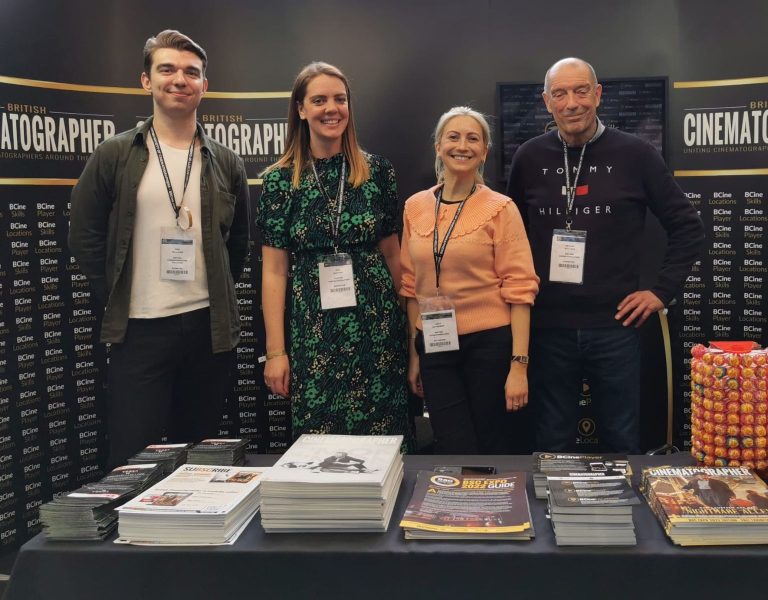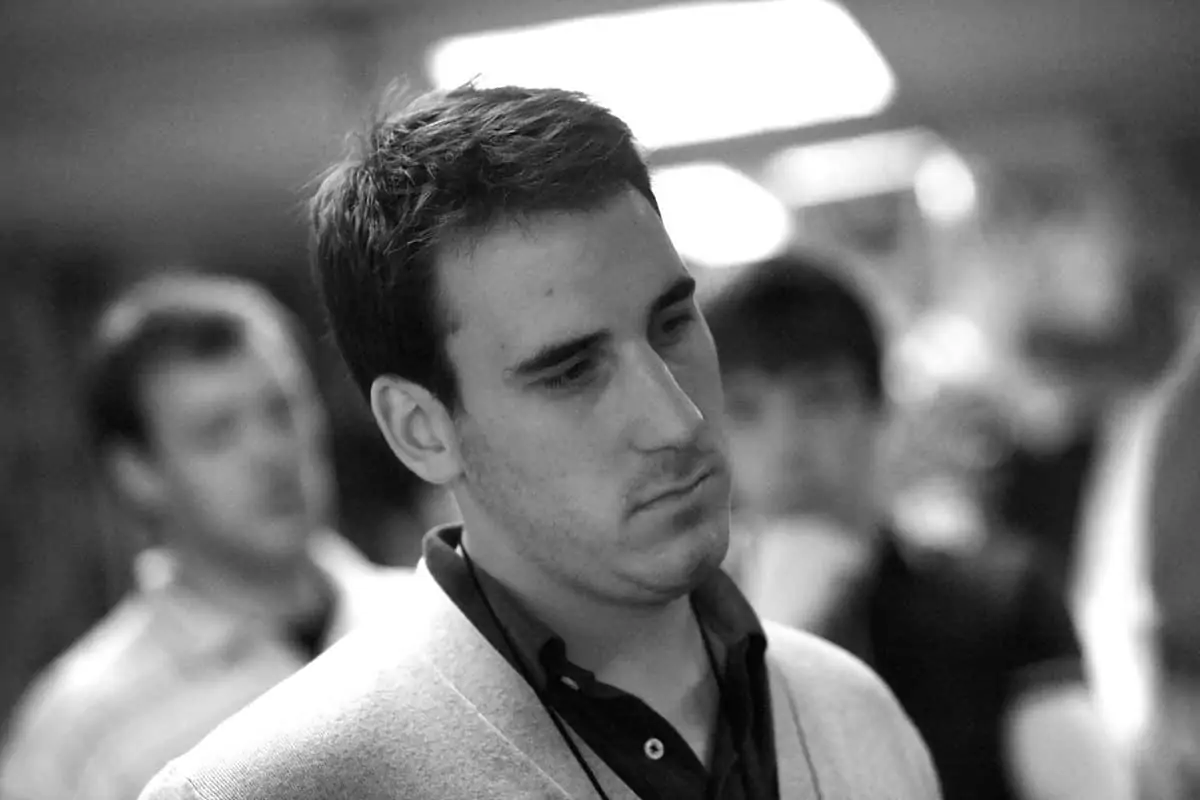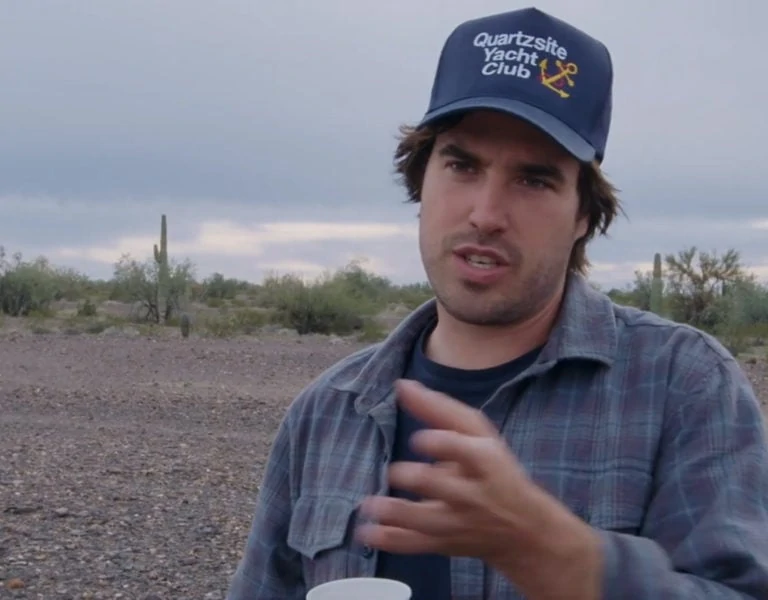FEEL THE FORCE
James Friend ASC BSC and Chris Teague, lifelong Star Wars fans, expertly crafted the stunning visuals of The Acolyte, the latest instalment in the saga. They unveil the secrets behind the series’ breathtaking cinematography.
In a galaxy far, far away but easily accessible on Disney+, an eight-part series, The Acolyte, has emerged. Set approximately 100 years before Star Wars: Episode I – The Phantom Menace (1999), the story follows a respected Jedi Master investigating a series of crimes. This investigation leads him to a former Padawan and uncovers sinister forces at play.
Chris Teague (Only Murders in the Building, Russian Doll) and James Friend ASC BSC (All Quiet on the Western Front) each directed the cinematography for four episodes, with Zoe Goodwin-Stuart ACO SOC Assoc BSC on B-Camera. The eight episodes took seven months to complete.
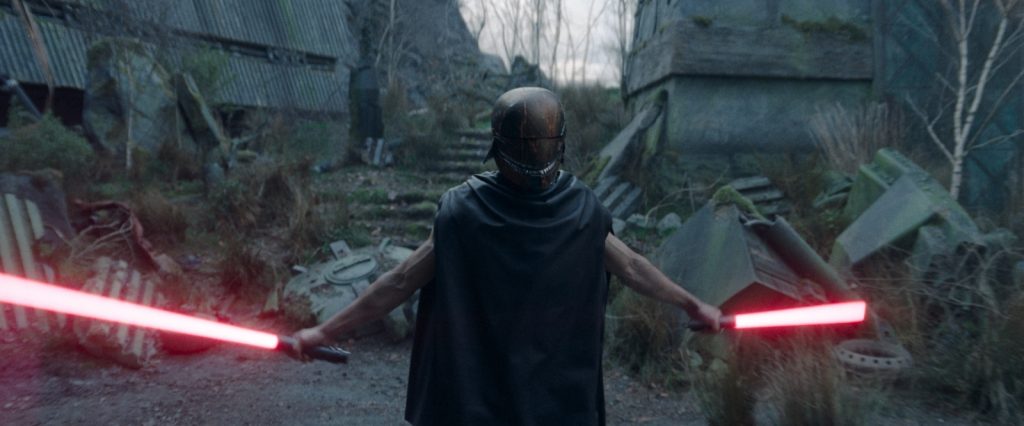
Teague admits he “has always been a fan” of the original George Lucas creations, but he “didn’t realise how much of a fan” he was until he started re-watching them.
“During my research, I realised the distinctive style of the original three films has greatly influenced my aesthetic sensibilities,” he explains. “This includes the textures and film types used in the movies, as well as the colour palettes that blend gritty tones with vibrant colours. I found myself responding to these elements in a way that I didn’t realise had become a part of who I am.”
Friend recalls that his first cinematic memory was deeply influenced by his older brother, a Star Wars super fan who immersed him in the universe.”
“After watching the original trilogies countless times, I saw a making-of documentary,” he explains. “It showcased the original blue screen, Dykstraflex, and miniature models of the Death Star. It didn’t break the illusion, only enhanced my fascination with the world. It introduced me to the movie magic of cinematography and filmmaking. Those weren’t spaceships; they were four-foot models with real people behind the illusion. It blew my mind.”
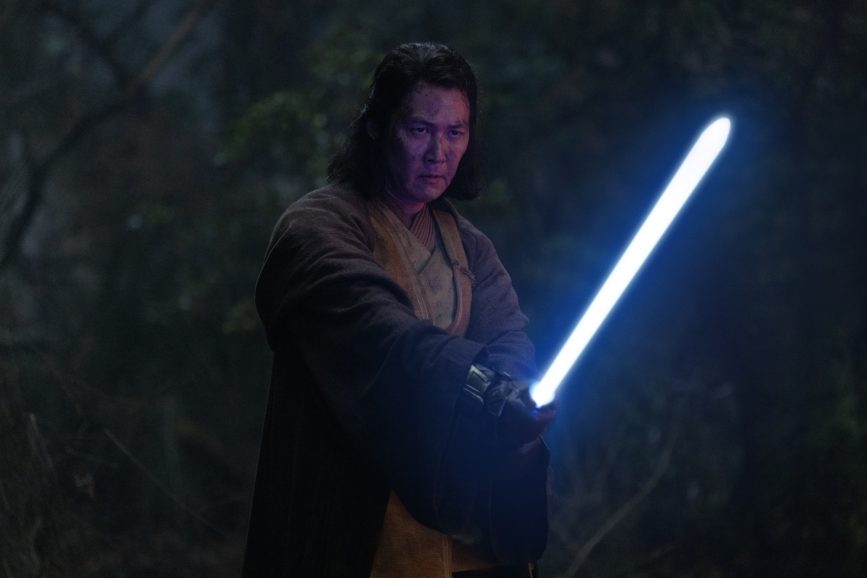
Camera and kit
It was decided that The Acolyte would be mostly shot on the Sony Venice 2.
“I had shot several shows with the original Venice, so I was very comfortable with the camera,” says Teague, and the lenses needed to be anamorphic in some shape or form. “We tested a lot of different lenses and narrowed it down to full-frame large format and then anamorphic because I felt the depth of field fall-off would be wonderful in the sets we were going to be working in. I was blown away by how the ARRI Alfas looked—they have this incredible fall-off at the edges that I find very cinematic. They strike the perfect balance between being somewhat vintage but very consistent across the line, with very little distortion. The moment we started shooting tests with those, they jumped out.”
Friend says he “was thrilled with this decision”, even though Teague shot large format anamorphic, which required slightly longer lenses and a more telephoto approach. “This differed from my aesthetic, as I prefer slightly wider, standard lenses and being closer to the action,” he explains. “I used the Sony Venice, equivalent to 35mm. The 35mm anamorphic aspect ratio is synonymous with Star Wars, similar to The Empire Strikes Back, shot on Cooke Xtal Xpress lenses. Large format is more associated with the new age of Star Wars, like The Mandalorian. Chris and I had different cinematic approaches, even for scenes requiring visual continuity. Lucasfilm respected our differences and gave us the freedom we needed.”
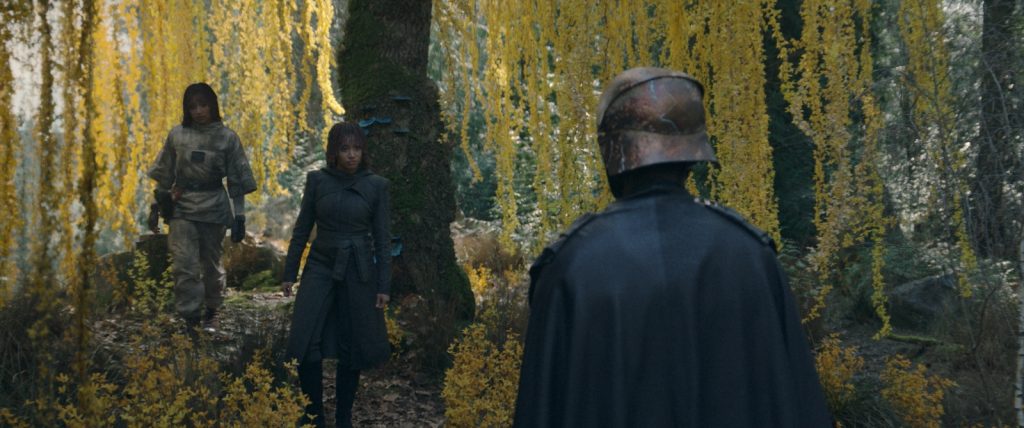
Fight club
Combat scenes are obviously the lifeblood of any Star Wars episode, but there’s one sequence that stands out for Teague, and it’s very early in the series.
“It’s the big action sequence in episode one when Mae fights Jedi Master Indara in what we called the noodle bar, but is actually more like the original Star Wars Cantina,” Teague says. “I was inspired by the opening scene in Butch Cassidy and the Sundance Kid—it informed the lighting style with its gritty and warm sepia tones. I felt like that came across, and it was the result of many people’s incredible efforts. I also loved the setting; it had dynamism, and we nailed the visual style we were aiming for. We wanted something classic, a nod to older Chinese martial arts films like Come Drink with Me, which had a simplicity, intentionality, and directness to it.”
In terms of lighting, there was a mixture. For the aforementioned scene, the primary lighting was tungsten. “We used a lot of Wendy lights there because they provide a wonderful, punchy, yet somewhat soft feel,” Teague adds. “Then we would modify those or wrap them with LEDs in the room. I often approach lighting by thinking of the one key source we’re working with and trying to be as faithful to that source as possible, while at the same time, invisibly wrapping it with other sources.”
Igniting a lightsaber “was a special moment” for Friend, not just because of the obvious excitement that comes with it, but because many of his scenes were at night. “The set was meant to be relatively derelict and clandestine, not looking like a Christmas tree, but with enough light to avoid being a dark hole,” he explains. “When it comes to a lightsaber fight, you must factor in that the characters are holding a light source. The older movies couldn’t do this due to the technology at the time, but now we can with LEDs. We lit the set with dim exposure, enhancing the scene’s realism.”
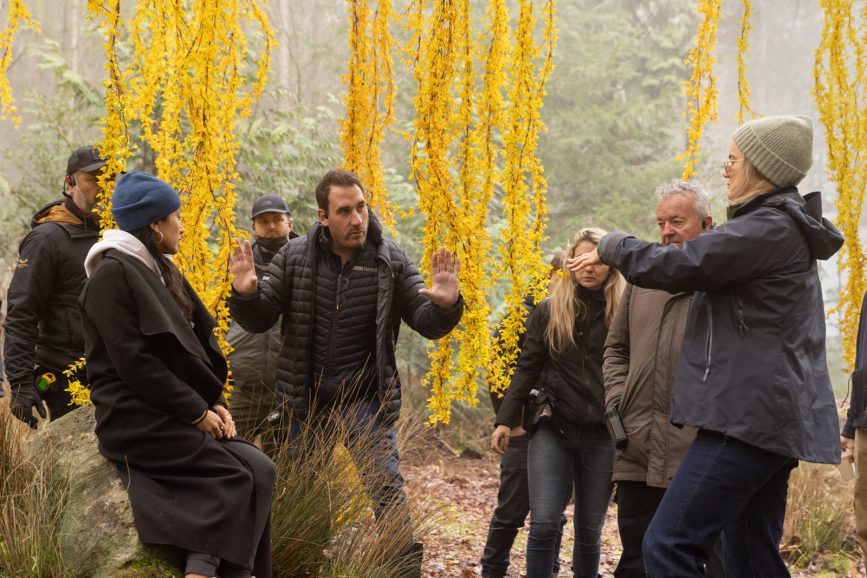
Looking back
For the sequences involving the palatial world of Brendok, which were mostly flashbacks, Friend says “the team built an entire set designed by Kevin Jenkins and the art department on the backlot”. It was a very high set, completely exposed to the elements. “The dramatic shadows created by the sun made filming challenging,” he adds. “Controlling shadows was difficult, requiring diffusions, butterflies, and other techniques. We also had many of our scenes set at night, so lighting up the vast set was sometimes tricky, especially with the adverse weather that filming in the UK in January and late Autumn, meaning we couldn’t hang softboxes off lighting cranes due to wind and rain, again making it tough to maintain lighting continuity.”
Though many shots are impressive, Teague’s favourite is the opening in episode five.
“Episode four ends on a cliff-hanger, and the opening of season five reintroduces us to the world with an overhead crane shot that slowly drifts down on our main character, traveling through the forest set seen in episode four,” he says. “We thought it was a great way to bring us back into the world and remind us of the stakes we were dealing with when we left episode four. I was given a remarkable amount of creative autonomy on the show, reflecting how director Leslye Headland and I collaborate.”
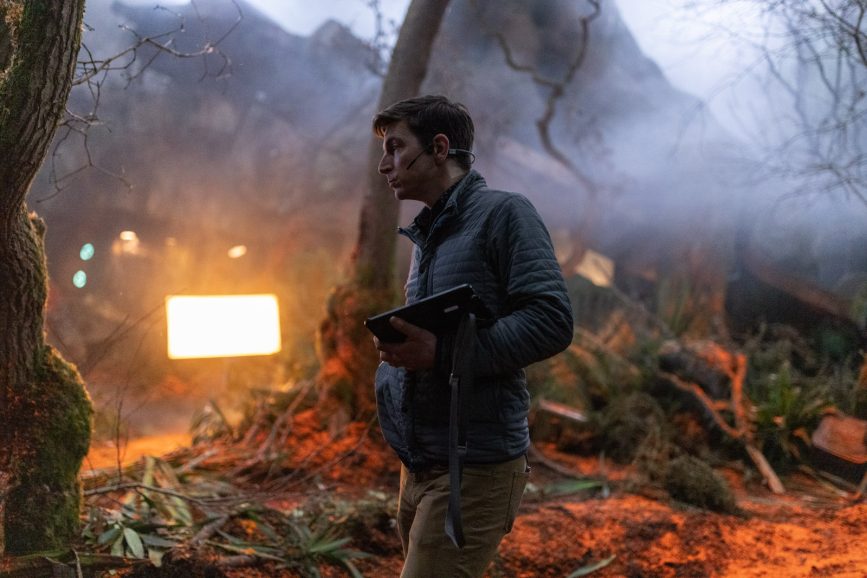
Different stages
Teague says the challenge in episodes four and five was blending exterior locations in Madeira—such as big open plains and forest valleys—with a massive set built in a UK warehouse. There were other challenges, too “such as trying to make these sets feel bigger than they actually are”, despite some of them being already huge. “Additionally, we aimed to reuse them for multiple scenes across several episodes,” Teague adds. “Episodes four and five primarily take place in a forest set located in a place called Khofar. It was the largest stage build I’ve ever been part of. However, when you start walking around the warehouse and consider how everything will be staged—the trees, pathways, and everything else—it quickly feels small. We needed to create a journey spanning two episodes within this space, presenting a significant challenge in making it feel full, dynamic, and lifelike. We also had to be flexible, shifting and rearranging elements to shoot from different angles and perspectives to maintain a sense of freshness and variety.”
The series was shot almost entirely on blue screen, but Teague says he was fortunate not to use an excessive amount of it, which made life a lot easier for him. “I had actual spaces to light and work with, and the light just performs in a more realistic way when it’s bouncing off real surfaces,” he adds.
Teague also reserves special praise for the art department on the production, which he describes as “phenomenal” for the way it delivered so many hand-painted backdrops and on such a scale.
“I had never seen canvas backdrops that were hundreds and hundreds of feet long, which also integrated perfectly with the foreground elements of sets,” he adds. “When we found the right mixture of lighting to blend the two together, it felt seamless when you shot it.”
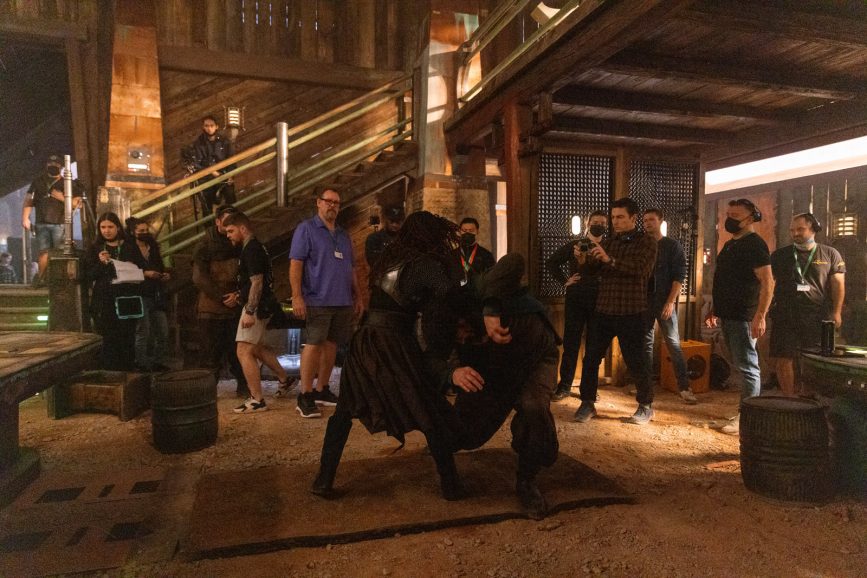
Learning curves
Friend says that one of the privileges of filmmaking “is that you never stop learning – the moment you stop learning and adapting” one needs to question their inspiration. “The surprises you face and your own reactions to them keep you on your toes,” he continues. “Working on such a large-scale production, which was feature-film scale but stretched over eight episodes, required maintaining a high quality at a fast pace due to the television schedule.”
In Friend’s words, the production wasn’t blessed with a gargantuan budget. “Our crew often said, ‘We are not Andor’, another Star Wars series with a much bigger budget,” he continues. “We aimed to deliver the quality expected of a Star Wars production with much less money. Leslye our showrunner, was a dream to work with and never imposed strict rules, which was refreshing. Chris’s and my episodes were set in two different timelines. While I often handled the flashback episodes, I also did the finale. Chris chose to shoot on large format with ARRI Alfa lenses, co-created with Greig Fraser (ASC ACS) for The Batman, one of the most sublime-looking films of the past decade.”
Teague says he and his team did a lot of drone work in Madeira for establishing shots such as sunrises and sunsets. He explains the biggest learning curve on the shoot was appreciating how the various departments worked.
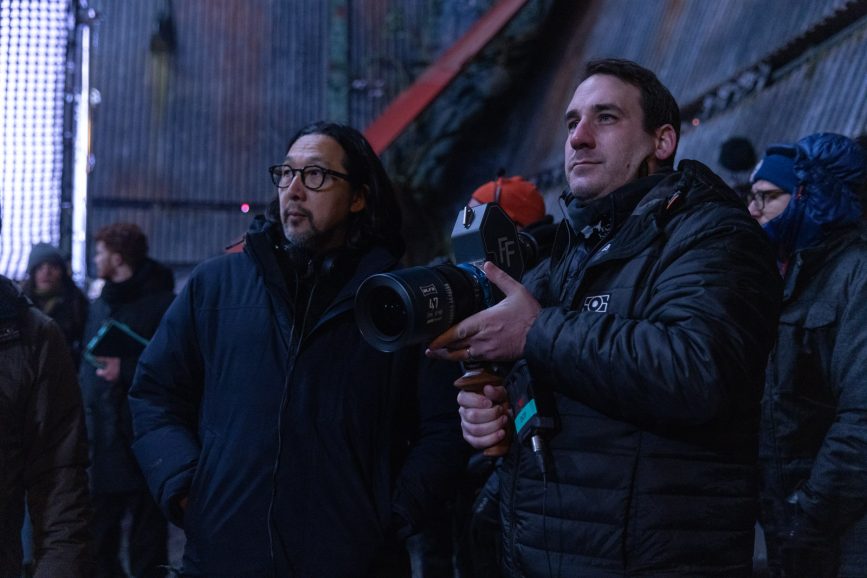
“There are so many departments, such as set decoration, special effects, visual effects, and creature effects, and to learn very quickly how those departments work at this scale was probably the biggest learning curve for me,” Teague says. “It was also one of the most enjoyable parts of the show– getting to really know these department heads and understand the way they work. Visiting their workshops and spaces to see how they create and develop things. When you are dreaming up a certain lighting effect or shot, having such talented people to help you execute it makes a big difference. You know you have the people who can make it happen.”
He says, “A great example of that is at the end of episode two. Mae gets trapped by the Jedi, and Jeki flies over the planet Olega in their ship, which has searchlights sweeping across the planet,” he adds. “In partnership with Johnny Franklin, our gaffer, and Dave Watkins, who headed up our special effects team, they constructed this phenomenal wire rig setup to create a truss system with moving lights that were able to travel over 100 yards through our set and create this incredible sweeping light effect. So that was one of those examples of all these departments coming together and working at a high level to achieve something special.”
Other memorable moments for Friend include the “surreal experience” of working on set with a Wookiee. “When Joonas Suotamo walked in as Chewbacca, I got butterflies,” Friend says. “The first time I met him, I hugged him because there’s nothing like a hug from a Wookiee.”
Buckle up, and may the Force be with you. Always.
